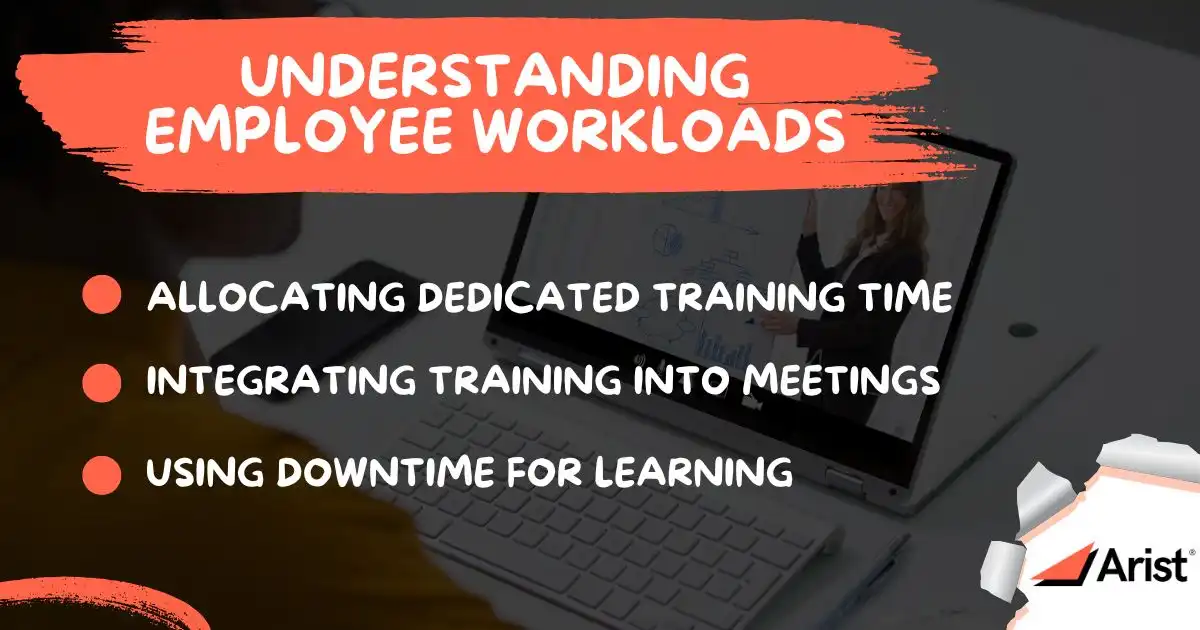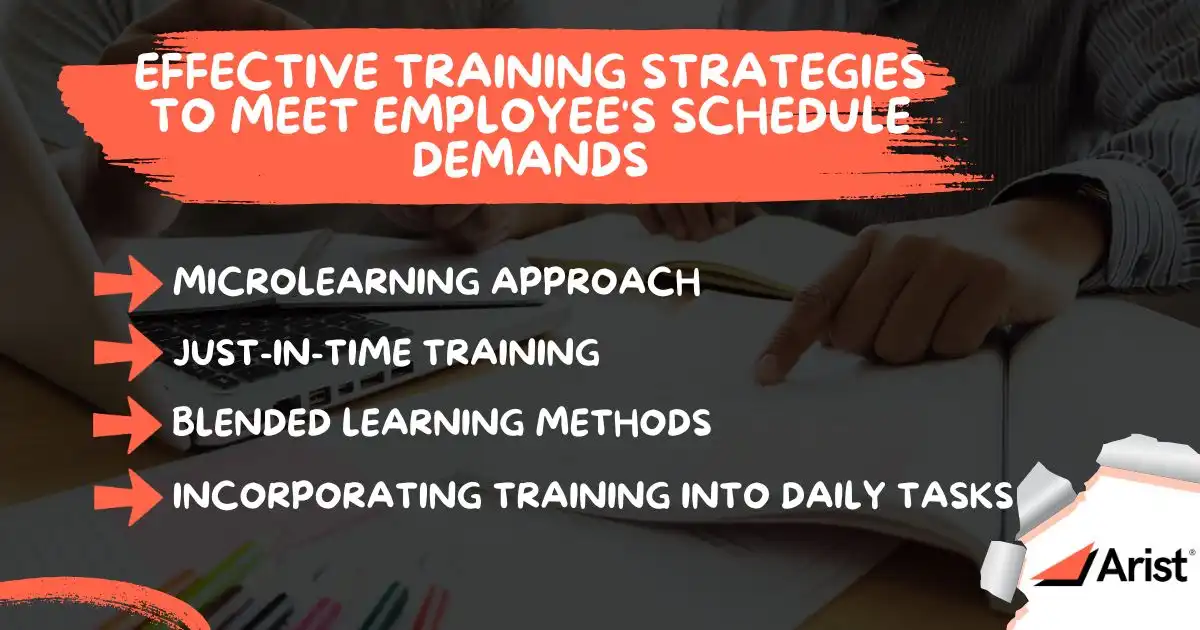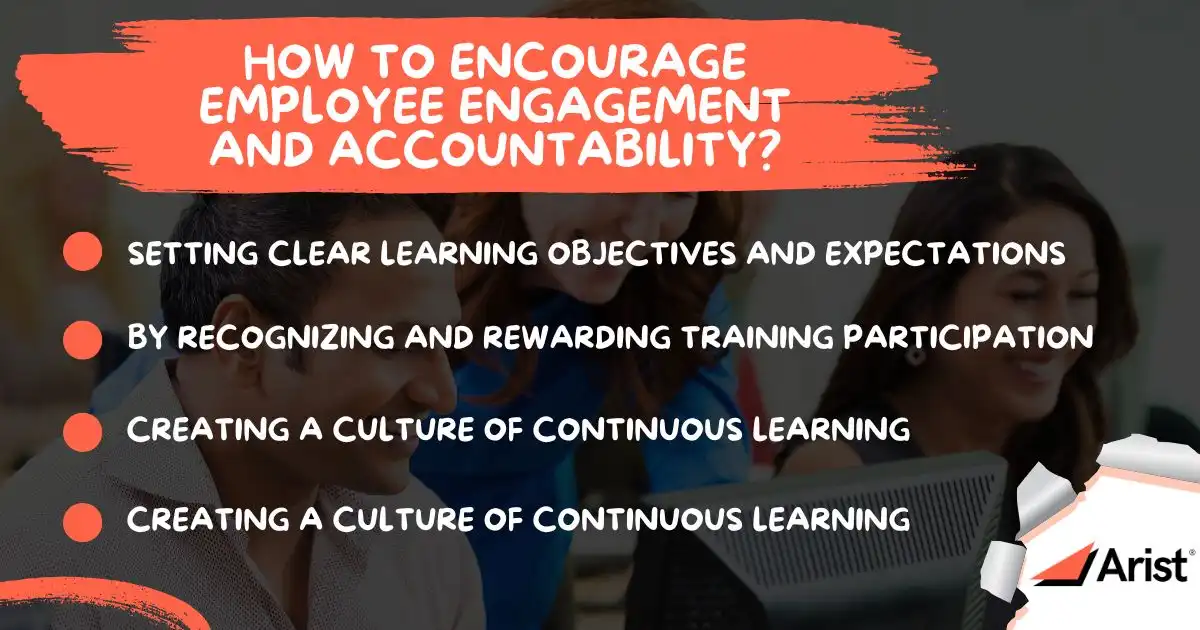How to Fit Employee Training into Their Busy Workdays
Ongoing learning is essential for both individual growth and company success. However, our staff are too busy for training given their countless workloads to do all simultaneously and often take a backseat to daily responsibilities. The challenge lies in integrating effective training into already packed schedules.
Every company or business needs the right tool to strategize the training schedule and seamlessly incorporate it into the employee workday without disrupting productivity and overwhelming them.
Understanding Employee Workloads

Organizations must take a proactive approach to analyzing workloads and schedules to ensure effective training without overwhelming employees. Pinpointing peak productivity hours versus slower periods enables companies to schedule training when it is least disruptive.
Instead of making assumptions, employers should actively seek employee input on availability and preferred learning formats. Every role comes with unique challenges and responsibilities. Acknowledging these nuances allows organizations to integrate training seamlessly into daily workflows.
Here's how you can prioritize strategic scheduling and transform training from an added burden into an empowering opportunity for growth.
Allocating Dedicated Training Time
One of the most effective ways to prioritize training is to set specific weekly hours dedicated solely to learning. By establishing a training schedule, employees can anticipate when to focus on skill development and when to engage in their daily tasks.
Making training part of the work plan ensures it becomes a priority rather than something employees must squeeze between meetings and deadlines. Thus, it embeds training into the organization's culture.
Integrating Training into Meetings
Another time-efficient way to incorporate learning is to integrate impactful learning sessions into team meetings. These sessions can be quick knowledge-sharing moments or presentations on relevant topics that enhance team members’ skills.
By utilizing the time they regularly allocate for team collaboration, employees can learn new concepts without disrupting their workday team collaboration and encourage employees to share knowledge. Knowledge-sharing within meetings can make training more dynamic, allowing employees to learn from internal experts and external sources. This ensures that team-wide skills development is continuously nurtured.
Using Downtime for Learning
Every employee has periods during the workday when things may slow down. These moments, such as during breaks, lunch hours, or when their workload is lighter, can be excellent learning opportunities. By encouraging employees to take advantage of these slower periods, companies can create an environment that maximizes training without detracting from work responsibilities.
This can involve recommending employees explore bite-sized learning modules, listen to educational podcasts, or participate in e-learning courses during their commute or breaks. When employees are encouraged to use downtime for self-paced learning, training becomes a continuous, flexible process rather than a disruptive event that occurs only at designated times.
Effective Training Strategies To Meet Employee's Schedule Demands

Microlearning Approach
Instead of providing one large piece of information, why not deliver training in small, focused chunks? This would make it easy for employees to digest without overwhelming them. These short modules include videos, quick quizzes, or short articles on a specific skill or concept.
Employees can engage in these bite-sized lessons during short breaks, making them more manageable and effective. Employees cannot learn on their terms with microlearning, leading to higher engagement and better outcomes.
Just-in-Time Training
Providing employees with training materials as needed rather than in extensive structured sessions ensures that learning is directly applicable. This strategy offers employees the exact knowledge they need, precisely when needed. It is also perfect for busy employees who cannot afford to sit through lengthy training sessions.
With digital libraries and knowledge bases, employees can quickly access resources that address their immediate needs, such as how-to videos, documents, or troubleshooting guides. This reduces the learning curve and ensures employees can immediately apply their newfound knowledge to real-world scenarios, improving productivity and performance.
Blended Learning Methods
Online and in-person training allows employees to choose between self-paced learning and instructor-led sessions. This approach combines the flexibility of online courses with the personal touch of live interactions, making it ideal for employees with varying learning preferences.
While self-paced modules allow employees to learn independently, instructor-led sessions can provide deeper insights, answer questions, and foster collaboration. The best of both worlds, blended learning meets the needs of diverse teams, making it a practical and scalable solution.
Incorporating Training into Daily Tasks
Sometimes, the best way to learn is through direct experience. By embedding training into everyday tasks, employees can apply their learning in real-time, making it more relevant and effective. This approach can include job shadowing, where employees observe experienced colleagues to learn skills hands-on, or mentorship and peer learning programs, which foster collaboration and knowledge sharing within the team.
When integrated into day-to-day work, training doesn’t have to be separate; it becomes an organic part of the workflow, allowing employees to learn while delivering results.
Find out more about delivering training without disrupting any workflows. Read our blog “Delivering a Good Training Session Without Disrupting Workflows.”
How To Encourage Employee Engagement and Accountability?

Setting Clear Learning Objectives and Expectations
Setting specific, measurable, and achievable learning objectives helps employees stay focused on the end goal and track their progress. Communicating expectations allows employees to align their efforts with business objectives, making the training experience more meaningful and directly applicable to their jobs.
This transparency in the training process ensures that employees are not just going through the motions but are genuinely invested in mastering new skills that will make them more effective in their roles.
By Recognizing and Rewarding Training Participation
Incorporating gamification elements such as leaderboards, badges, and friendly competition can make training more enjoyable and engaging. Gamified elements introduce an element of fun, which can be particularly effective in encouraging continued participation. These recognition strategies acknowledge the effort employees put into their training and reinforce the value of ongoing skill development.
Creating a Culture of Continuous Learning
When leadership prioritizes professional development and demonstrates its importance, employees are likelier to follow suit. Organizations foster a growth mindset throughout the company by offering regular training opportunities, supporting career development initiatives, and ensuring that learning is seen as a long-term benefit.
This environment of encouragement makes learning an ongoing part of the work culture rather than a one-off event, which motivates employees to stay engaged in their development even after completing initial training. In such a culture, learning isn’t just a task to complete—it's an integral part of their professional journey.
Learn more about the relevance of continuous learning for your employees in “The Role of Continuous Learning in Talent Retention in the Corporate World.”
By Gathering Feedback and Improving Training Programs
When employees feel that their input is valued, they become more invested in the training process. Feedback mechanisms, such as surveys, polls, or one-on-one discussions, provide valuable insights into what works well and what areas need improvement.
Based on this feedback, companies can adjust content, format, or delivery to ensure their programs remain relevant, effective, and engaging. This ongoing improvement ensures that employees feel their needs are met, making them more likely to stay engaged with future training sessions and actively participate in skill-building activities.
Say Goodbye to Complex Training: Embrace AI Simplicity
It can be challenging to fit employee training into already-packed workdays. Start crafting your training session with thoughtful planning, flexible learning strategies, and the right technology. Prioritize employees' continuous learning without compromising on their everyday tasks. By embracing these methods, businesses boost employee skills and contribute to long-term success and growth.
Strategize your employee training with Arist's AI-driven solutions—easily integrate learning into your workday without disrupting productivity. Book a demo today and cover how.
Arist Team
Bring
real impact
to your people
We care about solving meaningful problems and being thought partners first and foremost. Arist is used and loved by the Fortune 500 — and we'd love to support your goals.
Curious to get a demo or free trial? We'd love to chat:


